Qingdao:The Switzerland of the Orient
2016-02-21
Qingdao (also spelt Tsingtao) is a city in eastern Shandong Province on the east coast of China as well as the largest city in Shandong province. Administered at the sub-provincial level, Qingdao has jurisdiction over seven districts and five countylevel cities. Qīng in Chinese means “green” or “lush”, while dǎo means “island”.
It is a beautiful seaside city with clear air and enchanting sea view. This city, bordered by the Yellow Sea on two sides, has the largest bathing beach in Asia and produces the mellow Tsingtao Beer. And Tsingtao Brewery is the second largest brewery in China.
For thirty three years, up to 1949, the city was a colony of Germany and Japan. Thus, it has a great deal of European architecture. This foreign architecture -a remnant of the colonial past- now beautifies this seaside city.
The red roofs, green trees, blue sea, and azure sky form a bright and colorful picture here. The city is sometimes known as the Switzerland of the Orient.
Surrounded by the sea on three sides, the city attracts many visitors with its charming seascape. Sights like the Eight Passes Villas, Wusi Square, the Zhan Bridge, Mt. Laoshan, No.1 Bathing Beach, Badaguan Scenic Area will help you remember the city. Other major attractions like Xinhao (Signal) Hill Park, Catholic Church (St. Emil Church), Golden Sand Beach, Small Qingdao Island, Lu Xun Park, and Underwater World are also worth a visit. Just walking on the sand and listening to the surf breaking on the beach becomes enjoyable.
Eight Passes Villas
Eight Passes Villas (also called Badaguan Scenic Area) is a famous picturesque sanitarium area located in the east of Qingdao City, Shandong Province. “Eight passes” indicates eight avenues that were named after eight famous strategic passes in China.
Eight Passes Villas is admired as “Chinas World Architecture Museum”. In the history, Qingdao was once been conquered by more than twenty foreign countries including Russia, Britain, France, Germany, the United States of America, Denmark, Greece, Spain, Switzerland, Japan and etc during war times, and Eight Passes Villas was just where people from these countries lived, they constructed buildings in each of their unique national styles in 1900s. Nowadays these stylish buildings are well preserved and appreciated by tourists from all over the world.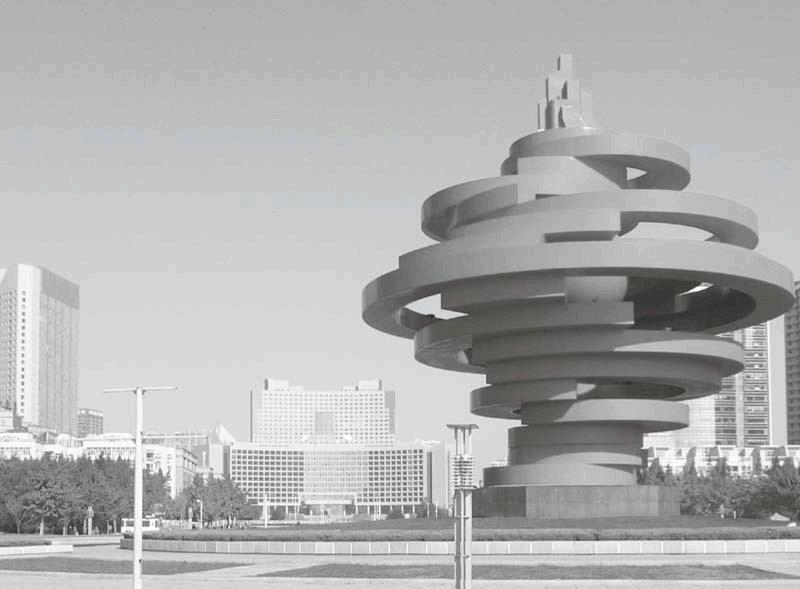
Scattered among the coastal flora and fauna, the Eight Passes Villas scenic area is called “Little Switzerland” due to the tranquility and comfortable atmosphere. Walking inside the scenic area, luxuriant trees growing along each avenue provide a pleasant shade for tourists. As each avenue has various flowers and trees planted, there are always flowers blooming all year round in Eight Passes Villas, gives this area another beautiful name, Hua Jie (literally means flowery street).
The best season for holidaymakers to enjoy a pleasant vacation in Eight Passes Villas Scenic Area comes from May to September when the weather is warm and mild. Tourists could lie on the beach and appreciate beautiful architecture at the same time. Walking alone the beach, you could feel the gentle breeze flowing on the faces and silvery sand touching your feet.
Badaguan was home to the many wealthy German and other European magnates in the city; and, particularly during the Japanese era, to White Russians that fled Soviet Russia. During the Republican era, many of the villas became homes to famous Chinese literary or political personalities – and this specific history is assiduously commemorated on the many plaques that adorn the gates of the villas.
Wusi Square
Qingdaos May Fourth Square got its name in memory of the May 4th Movement. Located between the new municipal government building and FuShan Bay, it is composed of the ShiZhengTing Square, the central square, and the coastal park. These three parts have their own features and the whole square is a combination of local Qingdao features and mod- ern design.
The May 4th Movement was sparked by Article 156 of the Treaty of Versailles which transferred German concessions in Shandong including Qingdao to Japan rather than returning sovereign authority to China. Chinese outrage over this provision ignited mass student demonstrations in Beijing on May 4th, 1919 which resulted in the cultural movement know today as the May Fourth Movement. The May 4th Movement influenced the Chinese delegation not to sign the Treaty of Versailles. China declared the end of its war against Germany in September of 1919 and signed a separate treaty in 1921.
The Zhan Bridge
Zhan Bridge has many other names such as Qianhai Zhan Bridge, Nanhai Zhan Bridge and Grand Pier. Located at the coastal area at the southern end of Zhongshan Road, it is an extension of the road into the sea. It is just about 0.3 miles from Qingdao Railway Station. Whether travelers come to Qingdao by train or by ship, Zhanqiao, a landmark of the city, welcomes them at their first stop in this beautiful coastal city. The locals say that you can not know the real Qingdao if you have not gone to the Zhan Bridge!
Originally built in 1891 as a naval pier, Zhanqiao can be regarded as a construction as old as Qingdao City. During the Qing Dynasty, the imperial envoy Li Hongzhang once came here to inspect the local development. At that time, Qingdao was just a small fishing village,which can not berth the big official ship of Li Hongzhang.
As a result, a temporary pier was built with a length of 200 meters (656 feet) and a width of 10 meters (33 feet). The pier, which was the original Zhan Bridge, was in use during the following decades. After the establishment of PRC, modern deep water port was built in Qingdao area; therefore the bridge was abandoned.
Now, it becomes a famous scenic spot thanks to the renovation in recent years. It is 440-meter (1444-foot) long and 10-meter (33-foot) wide with giant granite supports. Lotusshaped lamps provide illumination and decoration. At the south end of the bridge is a Chinese style octagon pavilion standing in contrast to European buildings in the background. It is called Huilan Pavilion. Some small art exhibitions are often held here.
Qingdao Bay is crescent shaped; like an arrow, the bridge shoots into the broad sea. Standing afar, a white lighthouse braves the waves and wind, while the Small Green Island (Xiao Qing Dao) is a serene platform for exuberant trees. Dynamic and static scenes meld. No. 6 Beach west of the bridge and Zhan Bridge Park to its north invite visitors to enjoy the beauty of the Bay.
Mt. Laoshan
Facing the Yellow Sea, Mt. Laoshan is located to the east of Qingdao. This tall and majestic mountain is famous for its marvelous mountainous scenery and coastal landscape. It is regarded as the most recognized mountain of all mountains on the coast of China. It also holds significant importance in Taoism. Thus it is a must to see when traveling in Qingdao.
As the most famous mountain on the coast Mt. Laoshan caters well for tourists. Three lines lead the visitors to 220 scenic spots including historical and natural points of interest.
The Southern Line: On the first line there are not only marvelous landscapes but also sacred Taoist Palaces. Significant points of interest include the Taiqing Palace, Xufu Islet and Longtan Waterfall(Dragon Pond Waterfall). The Taoist culture and temples of Mt. Laoshan are very famous. At the peak of Taoism, it was said that there were nine palaces, eight Temples and seventy-two nunneries. The number of Taoist had reached above one thousand. While later many buildings were destroyed, amongst those still remaining the Taiqing Palace is the largest. The Taiqing Palace also has the longest history of these buildings spanning more than two thousand years. Covering an area of 30,000 square meters (about 7 acres), the Taiqing Palace has 155 rooms. It has been well preserved and holds the typical architectural style of the Song Dynasty (960-1279). This form of architecture is quite rare in religious architectures in China.
The Central Line: The second line mainly focuses on Beijiushui. The name Beijiushui derives its meaning from the mountain that has nine crooks, thus making the river turn nine times. The river starts from the north side of the Ju Peak(the highest peak of Mt. Laoshan) and flows into the valley. So many beautiful things are on this line that it is called ‘the Jiushui Gallery. At every corner, totally different sights can be found. The current here is rather swift while further on the river flows very slowly. The flowers, trees and odd rocks on both sides of the river emphasize the elegant beauty of the water. The most famous sight of Beijiushui is Chaoyin Waterfall. During the rainy season the waterfall is quite majestic. The water crashes against the rocks, producing a huge sound similar to waves crashing against the seashore.
The Eastern Line: The third line includes the Taiping Palace, the Lion Peak, Huayan Temple, Naluoyan Cavern and other sights. Naluoyan Buddha Cavern is one such scene. It is located in the Naluoyan Hill to the east of Mt. Laoshan. It is a natural granite cavern 7 meters (about 23 feet) wide and 15 meters (about 49 feet) high. More than 100 people can stand inside at one time. Its structure is quite unique. The smooth walls and flat ground are just as they were pared. On the wall of the cavern protrudes a thin stone, like a Buddha niche. At the top of the cavern is a round and smooth hole. It was said that the hole was made by the supernatural power of Naluoyan Buddha. Through this hole sunlight can enter thus lightening the whole cavern.
No.1 Bathing Beach
Reputed to be the largest sandy beach in Asia, the No.1 Bathing Beach is situated on Huiquan Bay in Qingdao, Shandong Province. Also called Huiquan Bathing Beach, it is noted for its clear water, mild waves and soft sand. The beautiful scenery with its European ambience can compete with Hawaii, Bali or Samet Island in Thailand.
The beach was first built in 1901 by the Germans after they invaded Qingdao. At that time, it was a famous entertainment place in East Asia but it was only open to foreigners. In 1984 and 2003, the local government repaired and expanded the place on a large scale. The beach took on a new look: it was enlarged and more public service facilities were constructed.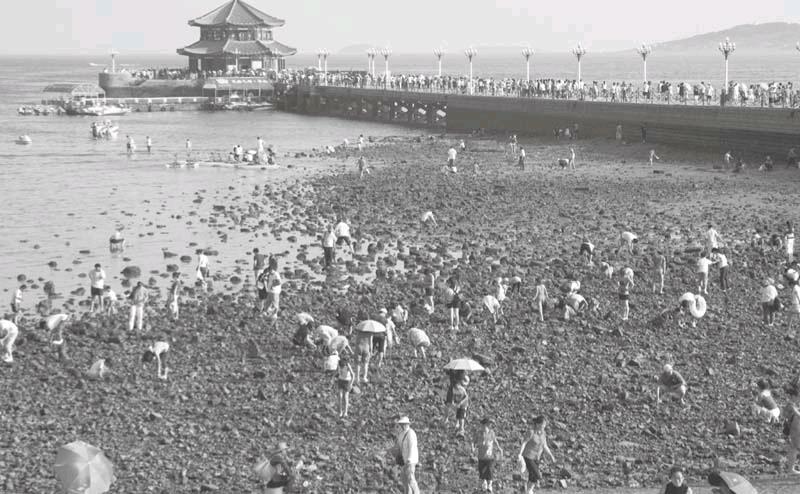
At present, the beach covers an area of 3.6 hectares (8.9 acres) and is well equipped. Colorful chalets built in various shapes lead visitors into a fairytale world. More than 900 showers are provided. Restaurants, ballrooms, bars, cafes and temporary chalets are all available. Emergency life-saving equipment has been improved. A security monitoring system covers the whole beach. Combined with the broadcasting, lighting and background music systems it ensures the security of visitors.
Surrounded on three sides by mountains, the beach is like the pearl of Huiquan Bay. The gentle slope and mild waves make the place a comfortable play area. Visitors can sunbathe here and swim near the coast, relaxing by playing volleyball or running on the sand and even dining on it. The regions comfortable weather makes it a good choice to avoid the summer heat. Even in winter this place is crowded with keen swimmers.
The bathing beach is divided into a swimming zone and non-swimming zone. July, August and September is the best time to visit. The neighboring spots include Huiquan Square, the Naval Museum and Lu Xun Park.
Small Qingdao Island
It lies to the southeast of Zhan Bridge, in Qingdao Bay, and is an important resort of the citys coastal scenic area. It is a great place to enjoy ocean views and to soak up an island atmosphere. At one time it was an isolated island about 720 meters (787 yards) off shore but in the 1940s a seawall was built, connecting it to the mainland. It is shaped like a qin (an ancient Chinese musical instrument), and when the waves ‘slapthe shoreline, the sound is similar to that of the instrument being played, leading to its local name of ‘Qin Island.
The island is famous for its unspoiled natural scenery, which includes steep rocky outcrops, and a variety of trees, such as cherries, pomegranates and hibiscus. Visitors can either walk along the coastline to enjoy the gentle ocean breeze, and to admire the incredible scenery, or sit on the beach to watch and listen to the gentle waves roll in. There are also statues and pavilions that can be viewed at various locations. This all makes for a delightful island to visit.
Another famous island attraction that adds to the glamour of Small Qingdao Island is the ‘beacon. It was built by the Germans in 1900 and stands 15.5 meters (51 feet) tall. It is built in the shape of an octagon and constructed from white marble. In the sunlight, the tower shines as white as snow while at night the light at the top sparkles like a ruby, guiding ships safely into the bay. When viewed from the sea, the beacons light flickers and appears to be floating on the waves. The local people consider it to be one of the ten top scenes of the city and call this view ‘Floating Light on the Qin Island.
To visit the Island, visitors can take the bus to Luxun Park bus stop where they will find the entrance to the island not far from Luxun Park.
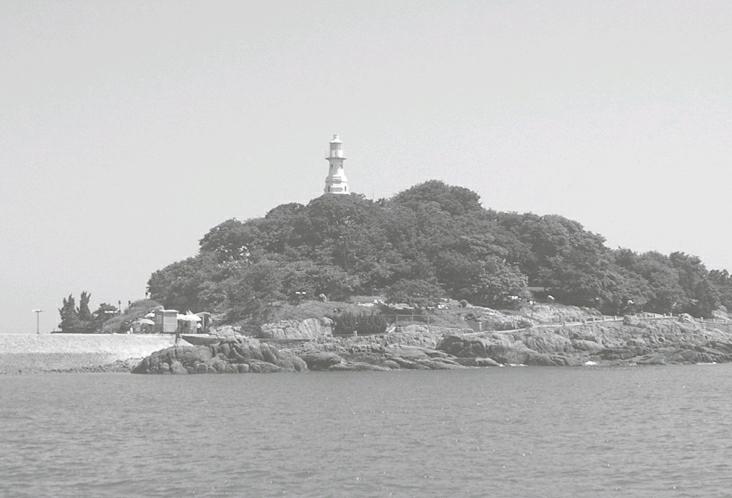
Luxun Park
Sited on the picturesque Huiquan Bay, Lu Xun Park stretches for about one kilometer (0.62 mile) along the coastline and boasts the most distinctive seashore park of Qingdao City. It covers an area of more than four hectares (9.9 acres), and is a charming park combining both enchanting natural scenery and sites of cultural interest. The neighboring Number One Bathing Beach, Small Qingdao Island and Little Fish Hill also contribute to the beauty of this park.
It was built in 1929 and was previously known as both“Ruoyu Park” and “Seashore Park”. In 1950, in order to commemorate Lu Xun, a great Chinese writer, ideologist and revolutionist, the park received its present name. In October of 1986, a three-meter (9.84 feet) high granite sculpture was erected at the entrance of the park to honor the 50th anniversary of the death of Lu Xun.
The entrance to the park is a dignified stone memorial archway sheathed in glazed tiles. The name of the park engraved on the archway was made according to the scripts of Lu Xun. Passing through the archway, you are welcomed by the thick lodge pole pine woods, rugged reefs, exquisite pavilions and sea dogs. The bottom of the rocks is grown oysters and gorgeous sea shells litter the sands. Visitors are frequently attracted by the sea shells and also the alga brought in by the waves.
Walking along the undulating narrow stone paths which wind through both the rocks and woodland, you will feel both happy and relaxed. Sitting atop the rocks and watching the waves has a unique and lingering charm. The waves bring in magnificent view of billowing; glittering foam and leave with a quiet gentle flow, and in the distance, the sea presents an intriguing view of colorful sails and flying seabirds. Lu Xun Park has become a desired destination for watching the tidal bore and the moon, listening to the waves and fishing.
The park is highly reputed owing to the extraordinary characteristics and many tourist souvenirs of Qingdao City are printed with the enchanting seashore scenery of the park. Moreover, some cultural interests distinguished by the literary works of Lu Xun have been set up here. A 75-meter (246 feet) long corridor is carved with 45 poems written by Lu Xun. A copper embossed portrait relief of Lu Xun is inlayed in the middle of the corridor. Seeing the stately poem corridor and other cultural landscape, visitors will be inspired by Lu Xun and feel the deep cultural atmosphere of the park.
Whats more, in the park, visitors can also go sightseeing in the Underwater World. Composed of Qingdao Aquarium, Qingdao Specimen Hall, South Pole Hall, Freshwater Fish Hall and Endangered Species Hall, it is the only museum in China that characterized by the study of halobios.
Underwater World
The distinctive Qingdao Underwater World offers a breath-taking view of a marine world. Lying to the northeast of famous Luxun Park and to the west of Number One Bathing Beach, it is situated on Huiquan Bay in Qingdao, Shandong Province. By means of modern techniques and advantageous geological location, it combines the advantage of the Qingdao Aquarium, Specimen Hall and Freshwater Fish Center, becoming a hot spot for marine ecotourism.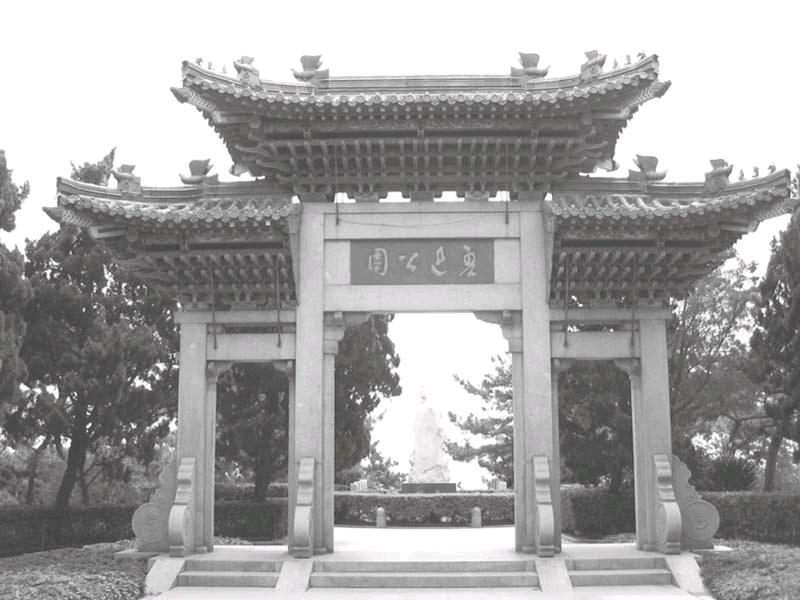
The underwater world consists of several interesting landscapes, including the inter-tidal zones, underwater tunnel, performance hall and exhibition areas. The inter-tidal zones are teeming with many special species, forming a particular ecosystem. Various algae, echinoderms, marine mollusks, arthropods and small amounts of fish are living here. Common marine life like starfish, sea urchins, sea turtles, octopus, crabs and small sharks can be seen; some bright-colored or oddshaped varieties will bring you a unique and spectacular view!The underwater tunnel breeds thousands of kinds of halo bios worldwide, among them are some rare species. Sauntering in the tunnel, you can see the sharks cruising leisurely in the water, shoals of fishes pulling on the reefs, and still some species staying quietly in the seabed.
Wonderful items, like the dances between human and sharks, sea-maiden exhibitions and underwater ballets are performed in the performance hall. If a new couple is willing to experience an underwater wedding here, they will undoubtedly have an unforgettable memory of this solemn and happy moment. In the large cylindrical exhibition chamber, the colorful corals, various beautiful seaflowers and gorgeous tropical pet fish will fully occupy your eyes. In addition, there are exhibition areas for sea horses, nautilus, lobsters, jellyfish and other marine life.
Qingdao Aquarium was the first aquarium of China. The magnificent main building followed the Chinese traditional fortress, and was reputed as one of the ten most imposing buildings of Qingdao City. Sea beasts like harbor seals, South American sea lions, Humboldt penguins are also kept in the spot and they will always present lively and artful performances to the visitors. Specimen Hall of Marine Life has the most abundant specimens worldwide, displaying over 20,000 specimens of more than 1,950 rare marine lives of China and the world. As the only specimen hall featuring the marine life in China, it also keeps many specimens of endangered species.
The Freshwater Fish Center is a simulation of a tropical rainforest ecological environment. It exhibits many rare and endangered species and some tropical fish, including South American arapaima, precious angelfish, Chinese sturgeons, Yangtze alligators and giant salamanders. In addition, there is a special exhibition area for the jellyfish. Thousands of various gorgeous jellyfish swim in the water, resembling blooming flowers in the garden and bring you to an unforgettable dream visit.
Catholic Church (St. Emil Church)
The St. Emil Church is the largest Catholic Church in Qingdao, Shandong Province. The church is located at Dexian Road. Local citizens of Qingdao used to call it the Catholic Church. Established in the early 1930s, the church was the largest Gothic architecture in Qingdao as well as a masterpiece of Christian architecture. The Qingdao Catholic Church was built in the early 1930s.
The construction of the church began in 1932 and ended in 1934. Covering an area of 2470 square meters, the church is built of yellow granites and ferroconcretes. The grand and sober windows are half arciform with fluent lines. A huge rosace was set on the gate. There are red-tiled bell towers of over 56 meters high on each side of the main entrance with a cross of more than 4.5 meters high on the top. Inside each tower four great bells are hung. Once the bells ring, the sound can be heard miles away. Behind the entrance there is a roomy and bright hall of over 18 meters high, which can accommodate more than 1,000 people. Soft light passes through rosace. Two ambulatories stand on both east and west sides of the hall. There are two large altars and four small altars behind the hall. The eikon painted on the halls vault and the dazzling lamplights make the church full of religious atmosphere.
The religious activities of the Catholic church are active. Worship ceremonies will be held on Sundays, when the hall is full of adherents, the priest presides the mass, and adherents sing fair-sounding anthems with the accompaniment of a piano, and pray devoutly. The Easter and Christmas are grand festivals for Catholicism. Ceremonious felicitation rites are held in the church every year with a passionate festive atmosphere.
Catholicism was firstly introduced to Qingdao in 1897 when the Germany force began to enter the city. In the spring of 1898, Germany missionaries built the first missionary place behind the Yaohou Palace at Taiping Road, recruiting new adherents and conducting religious activities.
From 1900 and 1902, Bai Mingde, a Germany priest, purchased a piece of land in Qufu Road and built the first Catholic Church in Qingdao. With increasing adherents and religious activities, people began to raise funds and planned to build a cathedral of over 100 meters high in Qiandao.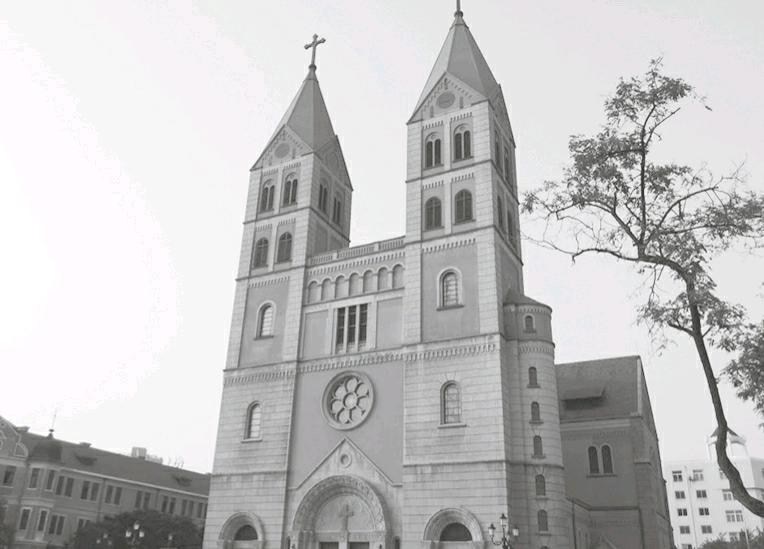
According to the original plan, there is a round pavilion and a lookout, from which one can enjoy the landscape of mountain and sea in Qingdao. The design was directed by Germany architect Bi Louha. The planned cathedral was a top-ranking church in the oriental countries with grand shape and luxury interior.
For several reasons, the plan was changed dramatically. The church was located in the east side of the flourishing Zhongshan Road. The construction started in 1932 and was completed in 1934, covering an area of 2,470 square meters. The grand and sober windows are semi-arciform with fluent lines. There are red-tiled bell towers of 56 meters high on both sides of the main entrance with a cross of 4.5 meters high on the top. Behind the entrance is a roomy and bright hall of 18 meters high, which can accommodate more than 1,000 people. Two ambulatories stand on both the east and west sides of the hall. There are two large altars and four small altars behind the hall. The eikons are painted on the halls vault.
In 1982, the church was reconstructed by the government and reopened. The religious activities of the Catholic Church are very active now.
